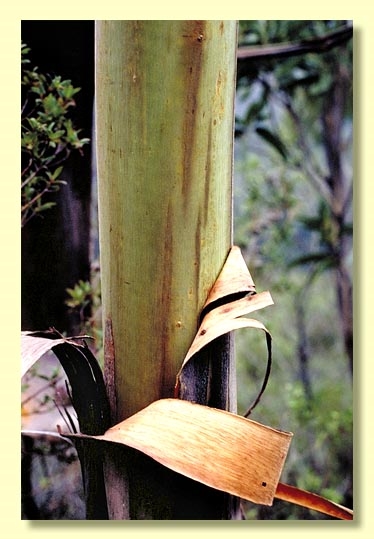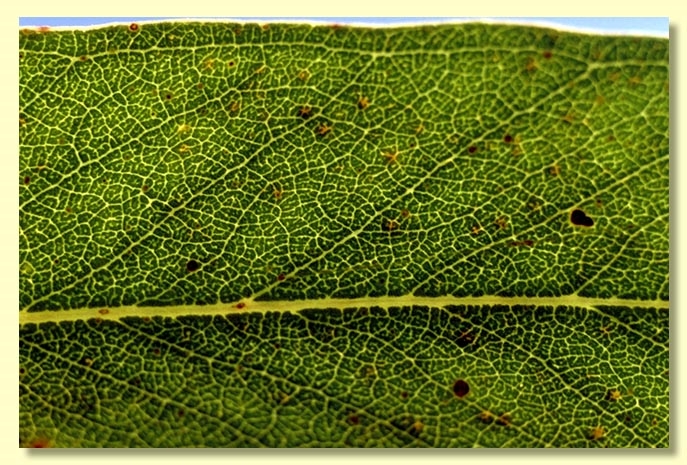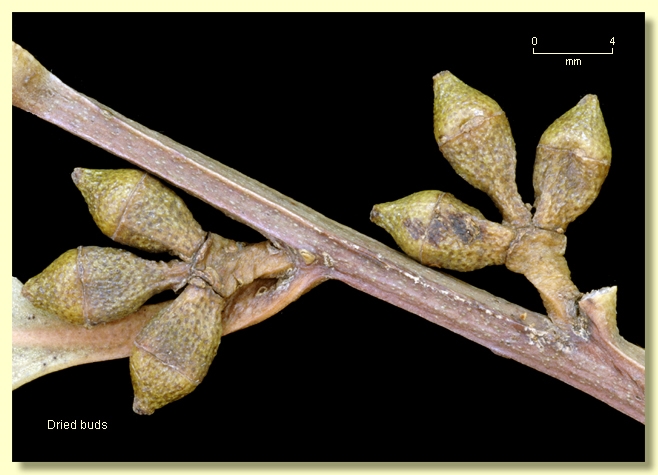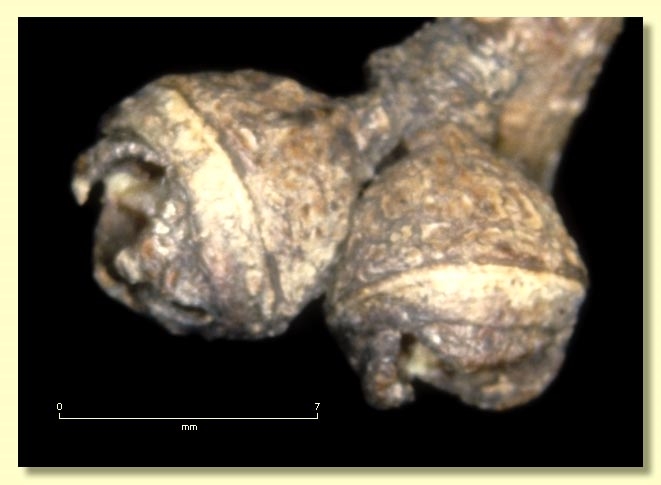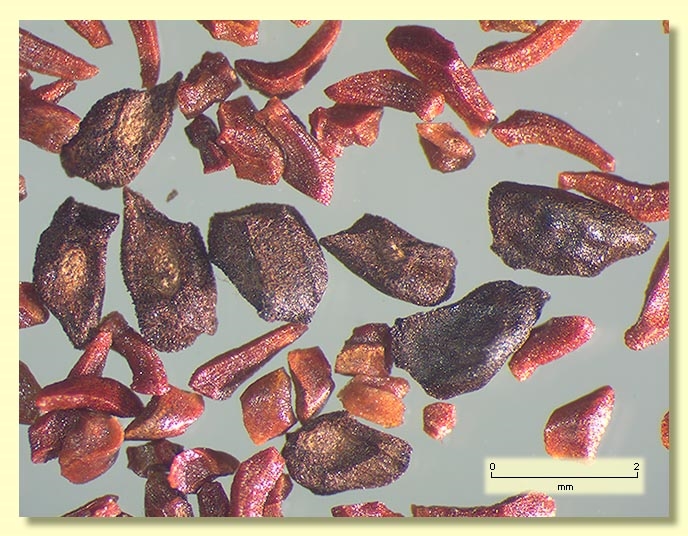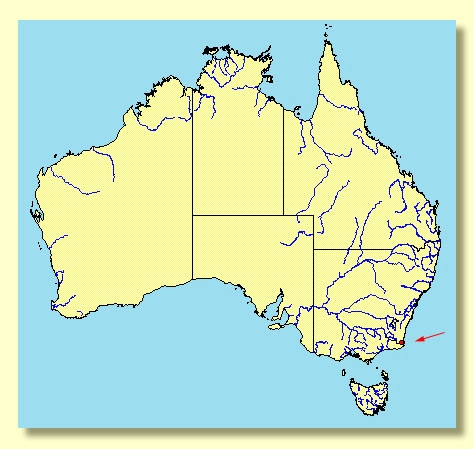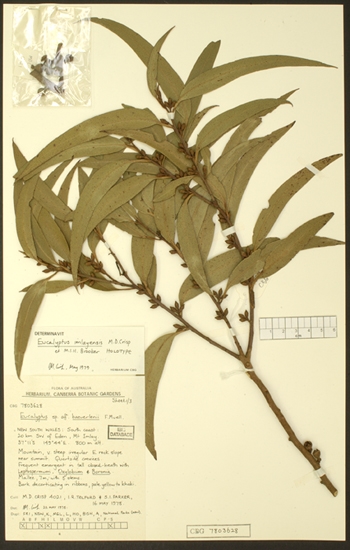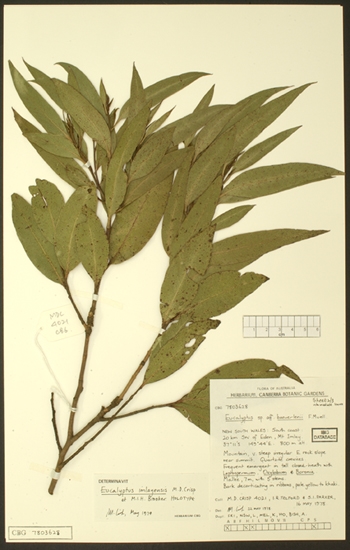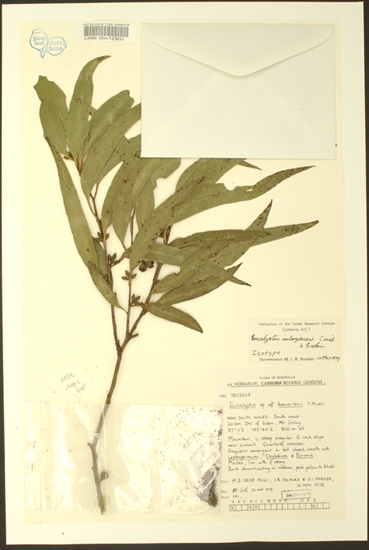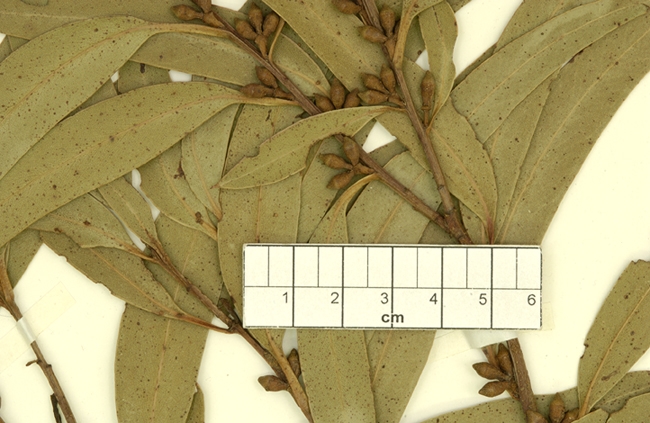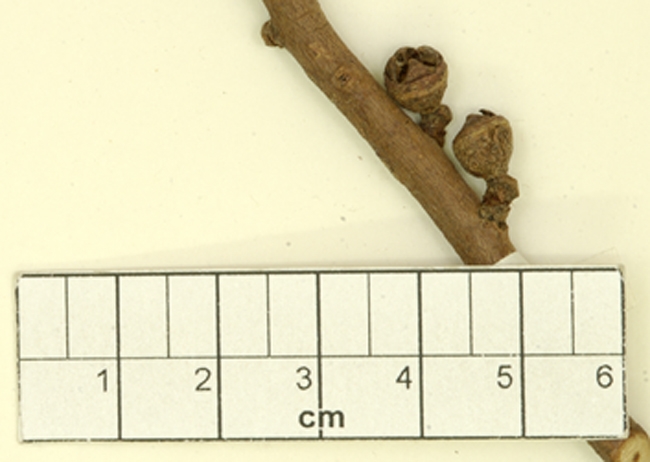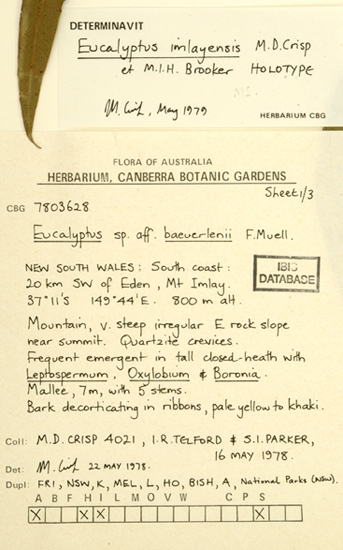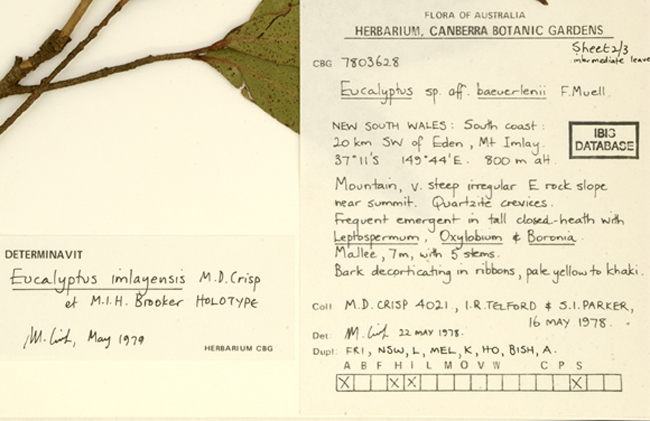Euclid - Online edition
Eucalyptus imlayensis
Eucalyptus | Symphyomyrtus | Maidenaria | Euryotae | Semiunicolores
Bark smooth throughout or with some thin persistent strips at the base of largest stems; smooth bark predominantly green, with orange, brown or grey patches, shedding in ribbons from the stems and branches.
Juvenile growth (coppice or field seedlings to 50 cm): stems square in cross-section, sometimes winged, slightly warty; juvenile leaves sessile for at least 20 pairs, opposite for about 7 to 13 pairs, then alternate, elliptic to ovate, 4–7.5 cm long, 1.5–3 cm wide, margin entire or crenulate, base rounded to tapering, green.
Adult leaves alternate, petiole 1–1.6 cm long; blade lanceolate to falcate, 7.5–15 cm long, 1.5–3 cm wide, base tapering to petiole, concolorous, glossy, green, side-veins at an acute or wider angle to midrib, densely reticulate, intramarginal vein parallel to and remote from margin, oil glands obscure.
Inflorescence axillary unbranched, peduncles 0.2–0.5 cm long, buds 3 per umbel, usually sessile (rarely with 0.1 cm pedicel). Mature buds ovoid, 0.5–0.6 cm long, 0.3–0.4 cm wide, smooth, scar present, operculum conical to slightly beaked, stamens inflexed, anthers cuboid to cuneate, versatile, dorsifixed, dehiscing by longitudinal slits (non-confluent), style long, stigma tapered, locules 3 or 4, the placentae each with 4 vertical ovule rows. Flowers white.
Fruit sessile, cup-shaped, campanulate or hemispherical, 0.4–0.5 cm long, 0.6–0.7 cm wide, disc raised-oblique, valves 3 or 4, exserted.
Seeds brown to grey, 1.5–2.5 mm long, ovoid or flattened-ovoid, sometimes pointed at one end, usually lacunose, dorsal surface smooth or shallowly reticulate, hilum ventral.
Cultivated seedlings (measured at ca node 10): cotyledons bilobed to oblong; stems square in cross-section; leaves sessile, opposite for many nodes, elliptical-ovate, 2–6.5 cm long, 2.5–5 cm wide, base tapering, margin entire or subcrenulate, apex pointed, concolorous, dull, green to grey-green.
Flowering time not known.
A small straggly mallee with smooth greenish bark known only from near the top of Mt Imlay south-west of Eden in sub-coastal far south-east New South Wales where it occurs on steep granite with E. sieberi, a blue-leaved ash species with a rough black trunk. Eucalyptus imlayensis is a smooth-barked, three-budded species and has opposite broad juvenile leaves.
E. imlayensis differs from any other 3-budded species in this area by its slender stature, mallee habit, green, non-stem clasping juvenile leaves, predominantly falcate adult leaves held somewhat erect, and stout buds and fruit that are scarcely pedicellate. It closely resembles E. elaeophloia, a species of similar size and habit from high country on the Nunniong Plateau in far eastern Victoria, which differs only by having orbicular early juvenile leaves (elliptical juvenile leaves in E. imlayensis) and shorter fruit with less prominent disc and valves.
Eucalyptus imlayensis belongs in Eucalyptus subgenus Symphyomyrtus section Maidenaria, a large group of species more or less restricted to south-eastern Australia, characterised by bilobed cotyledons, simple axillary inflorescences, buds with two opercula, stamens with versatile anthers and flattened seeds with a ventral hilum. Within this section, E. imlayensis, with four other species, forms series Semiunicolores having smooth bark, subcrenulate and strongly glandular juvenile leaves opposite for many nodes, a crown of green, densely and finely reticulate adult leaves, buds in threes, and small fruit with relatively prominent valves. Three of the species in this series are Tasmanian endemics, viz. E. johnstonii, E. subcrenulata and E. vernicosa; the fourth species is E. elaeophloia mentioned above.
Eucalyptus imlayensis is listed as "Endangered" under the Australian Government Environment Protection and Biodiversity Conservation Act 1999 (EPBC Act). Further information may be found at this web address:
http://www.environment.gov.au/cgi-bin/sprat/public/sprat.pl


